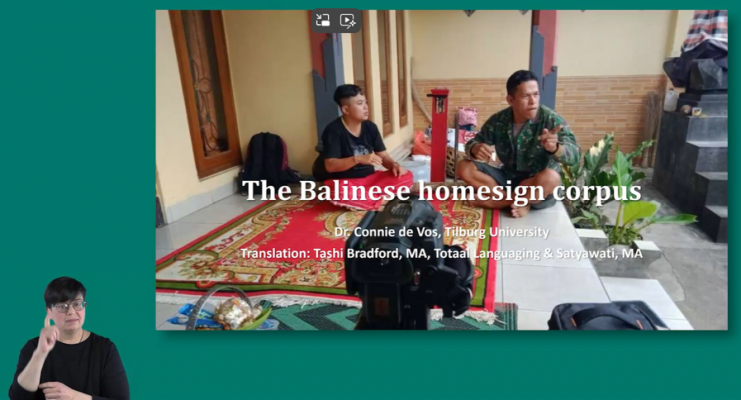New insights into rural sign Languages: The Balinese Homesign Corpus

The study, soon to be featured in Language Documentation & Conservation, was conducted by Satyawati Surjo Prasodjo, Ni Made Dadi Astini, Ni Made Sumarni, Ketut Kanta, Josefina Safar, Hannah Lutzenberger, Nick Palfreyman, and Connie de Vos, with special thanks to Max Planck Institute for Psycholinguistics. Their work focuses on homesign, a form of communication developed by deaf individuals who lack access to a conventional sign language community.
Key Findings and Significance
The research provides valuable contributions to the study of spontaneous language emergence and the development of linguistic structures. Notable findings include:
- The role of social interaction in shaping homesign systems: The study highlights how consistent communicative patterns emerge despite the absence of a shared language model.
- Pragmatic competence in homesigners: The research demonstrates that homesigners exhibit complex repair strategies during conversations, as documented in Safar & de Vos (2022) in the Journal of Pragmatics.
- Corpus development in rural contexts: The study provides methodological advancements for the documentation and analysis of emerging sign languages.
Broader implications and future research
This research has far-reaching implications for linguistics, cognitive science, and language documentation. It emphasizes the necessity of recognizing and studying homesign as a legitimate linguistic system while also contributing to the broader understanding of language evolution.
Future studies will expand on the corpus, with ongoing analyses expected to provide further insights into the complexities of homesign systems. Researchers and linguists can explore the Balinese Homesign Corpus via this link.
For those interested in a broader discussion of the corpus, an overview paper will be published in Language Documentation & Conservation later this year.
About the research team
This study was conducted by a multidisciplinary team specializing in language documentation, sign linguistics, and cognitive science. Their research contributes to a deeper understanding of how languages evolve in diverse communicative environments.
Media inquiries or further information:
Please contact: Dr. Hannah Lutzenberger, h.t.lutzenberger [at] tilburguniversity.edu (h[dot]t[dot]lutzenberger[at]tilburguniversity[dot]edu )
References:
Safar, J. & C. de Vos (2022). Pragmatic competence without a language model: Other-Initiated Repair in Balinese homesign. Journal of Pragmatics, 202:105-125. DOI: 10.1016/j.pragma.2022.10.017
Satyawati, Astini, N. M. D., Sumarni, N. M., Kanta, K., Safar, J., Lutzenberger, H., Palfreyman, N., & de Vos, C. (Accepted/In press). The Balinese Homesign Corpus: New Insights into Corpus Development in a Rural Signing Context. Language Documentation & Conservation. https://doi.org/10.31219/osf.io/6dqbm_v1
Share this page